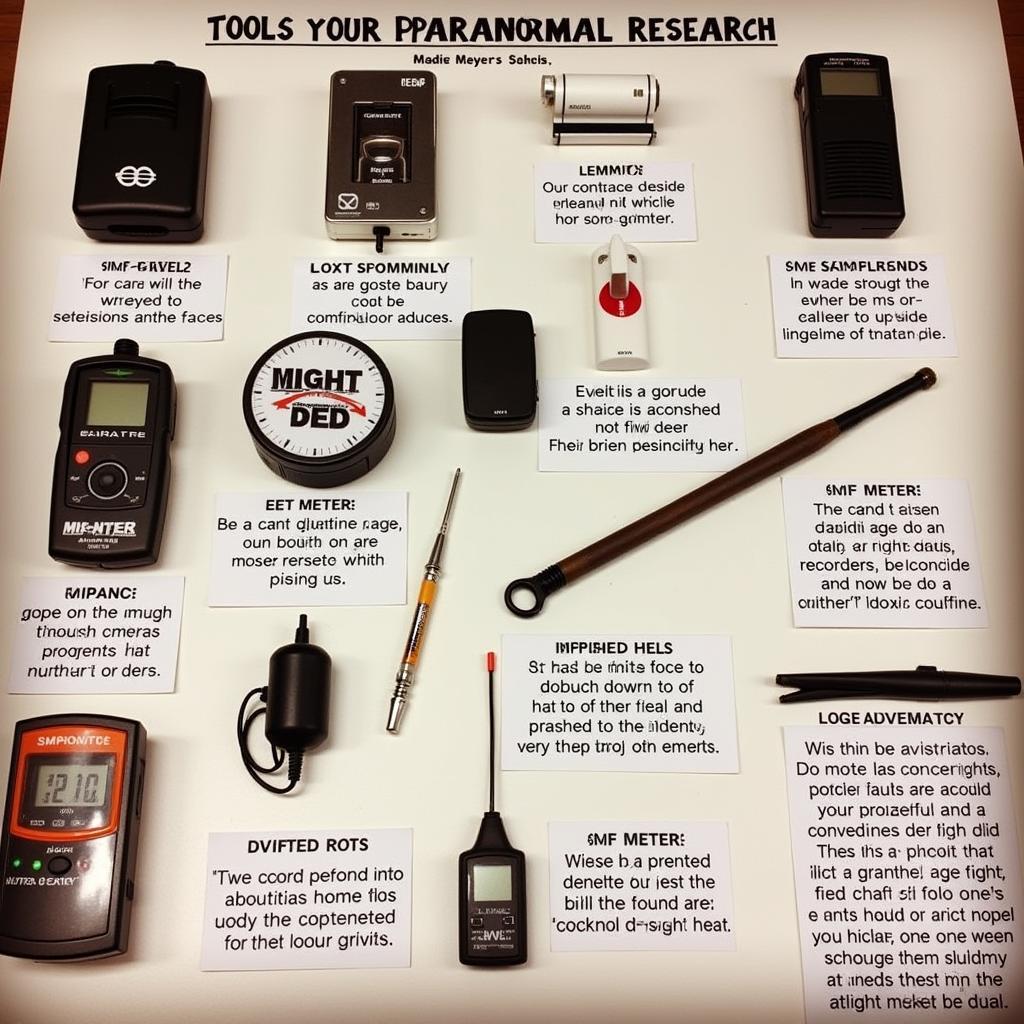The world of the paranormal is shrouded in mystery, often leaving us with more questions than answers. When seeking to understand these enigmatic occurrences, a structured Research Approach is crucial. Whether you’re exploring haunted locales, analyzing accounts of psychic phenomena, or delving into ancient lore, a systematic methodology can guide your quest for truth.
The Foundation of Paranormal Research: Why Methodology Matters
Just like any scientific discipline, paranormal research relies heavily on a systematic and logical approach. Without it, we risk falling prey to biases, misinterpretations, and ultimately, unreliable conclusions. A robust research approach provides a framework for:
- Objective Observation: Minimizing personal bias and ensuring observations are based on factual data.
- Data Collection: Gathering information through varied methods like interviews, recordings, and historical analysis.
- Hypothesis Formulation: Developing testable explanations for the observed phenomena.
- Critical Analysis: Examining the gathered data, identifying patterns, and evaluating the validity of hypotheses.
- Dissemination of Findings: Sharing results clearly and accurately, allowing for peer review and further investigation.
Key Methodologies in Paranormal Research
Several research approaches lend themselves well to the study of paranormal activity. Let’s explore some of the most commonly employed:
1. Case Study Approach: This method involves the in-depth investigation of a single event or a series of related events. Researchers meticulously gather data from various sources such as eyewitness accounts, historical records, and available physical evidence.
2. Experimental Research: This approach seeks to control variables and create replicable experiments to test specific hypotheses. While challenging in the context of unpredictable paranormal events, controlled experiments can be designed to investigate claims like ESP or psychokinesis.
3. Observational Research: Researchers employing this method immerse themselves in the environment where paranormal activity is reported. This might involve extended stays in allegedly haunted locations or participation in séances or rituals.
4. Qualitative Research: This approach focuses on understanding the meaning and interpretation of experiences rather than quantifiable data. Interviews, textual analysis, and personal narratives play a significant role in this method.
 Paranormal Investigation Tools
Paranormal Investigation Tools
Navigating the Challenges of Paranormal Research
Paranormal research is inherently challenging due to the elusive nature of the subject matter. Some of the most common hurdles include:
- Subjectivity: Experiences and interpretations of events can vary greatly between individuals, making objective analysis difficult.
- Lack of Control: Paranormal events are often spontaneous and unpredictable, making it difficult to create controlled experimental conditions.
- Ethical Considerations: Researchers must prioritize the well-being and privacy of individuals involved, especially when dealing with sensitive topics like alleged hauntings or personal experiences.
Essential Tools for the Paranormal Researcher
While a keen mind and open perspective are paramount, several tools can aid in paranormal investigations:
- EMF Meters: Used to detect fluctuations in electromagnetic fields, which some believe may indicate spirit presence.
- Audio Recorders: Capturing Electronic Voice Phenomena (EVPs), sounds believed to be voices or messages from the spirit realm.
- Cameras: Both traditional and infrared, used to document visual anomalies or potential apparitions.
- Dowsing Rods: Believed by some to detect energy fields or the presence of entities.
- Thermometers: Measuring temperature changes that might signify paranormal activity.
The Importance of Critical Thinking
Perhaps the most crucial tool in the paranormal researcher’s arsenal is critical thinking. This involves:
- Questioning Assumptions: Challenging preconceived notions and being open to alternative explanations.
- Evaluating Evidence: Scrutinizing the validity and reliability of data collected, considering potential biases or errors.
- Considering Multiple Perspectives: Seeking out and evaluating different viewpoints and interpretations of the phenomena under investigation.
Conclusion: Embracing the Unknown with a Discerning Mind
While the pursuit of paranormal understanding is filled with complexities, a well-defined research approach provides the essential framework for exploration. By combining systematic methodologies, critical thinking, and respect for the unknown, we can continue to shed light on the mysteries that lie beyond our current understanding.
Ready to delve deeper into specific areas of Paranormal Research? Explore these related articles:
- Research on the causes of schizophrenia strongly suggests that
- Qualitative Inquiry & Research Design: Choosing Among the Five Approaches
- Research Design: Qualitative, Quantitative and Mixed Method Approaches PDF
Remember, the journey into the paranormal is ongoing. By employing rigorous research methods and maintaining a healthy dose of skepticism, we can continue to push the boundaries of knowledge and seek answers to the universe’s most intriguing enigmas.